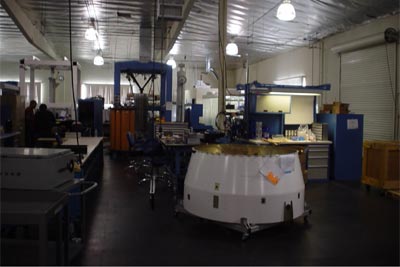Backgrounder: SpaceX making historyby Sam Dinkin
|
| The most radical innovation is running SpaceX not like a bureaucratic aerospace firm or even like a skunkworks. SpaceX is run more like an Internet technology startup like Musk’s Zip2 or PayPal. |
Not satisfied with business as usual, Musk’s SpaceX does not rely on decades-old space proven products or even the veteran aerospace testing firms, instead building new components and testing them in house. SpaceX’s control systems are based on modern technologies that are off the shelf such as an ethernet network to run its avionics systems.
The most radical innovation is running SpaceX not like a bureaucratic aerospace firm or even like a skunkworks. SpaceX is run more like an Internet technology startup like Musk’s Zip2 or PayPal. Flat hierarchy, stock options, and a fun-loving holistic culture that makes free snacks available to the workers are three of the most visible elements of this business strategy.
None of these innovations is particularly novel except perhaps for the sleepy launch industry, mired in risk aversion and cost-plus thinking. Putting together a boring (perhaps too boring) set of technologies dropping the cost to orbit to less than $3,000/kg vs. $11,000/kg for an Atlas 5 401 just shows how moribund the cost-cutting energy of SpaceX’s competitors is. Launching once a day, as might be required to produce a snap-together Mars mission, might reduce costs another factor of ten from development amortization, lower insurance costs, reuse, higher capital utilization, and mass production techniques that could reduce Falcon to a little more than the cost of the aluminum and the fuel.
If SpaceX’s Falcon series flies and keeps its innovative price list, Elon Musk may generate his “Netscape Moment”. We may see a stock market boom, space IPOs, and the 3rd nine-figure dollar payout to Elon’s investors.
